Dental treatment
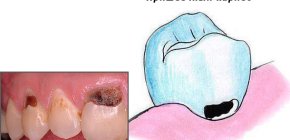
Faced with problems associated with cervical caries (and there are not so few) and the need for urgent treatment, many people experience stress for several reasons. Firstly, despite the abundance of accessible and useful information in the network and the media about caries, the features and specifics of cervical defects are usually not even covered to the extent required to understand the essence of the problem and its quick solution. Secondly, the localization of the carious process in the cervical region of the front teeth creates the prerequisites for visual cosmetic disorders and psychological complexes. Therefore, let's take a closer look at the issues of cervical caries treatment, including measures that can have a positive effect even at home ...
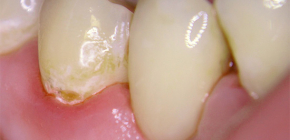
Cervical caries (cervical), as one of the most active forms of the disease, is quite common. Most people themselves discover a carious defect in the cervical region already at the initial stage of development. Moreover, they pay special attention to the disease when it is associated with serious aesthetic disorders. Many, fearing dental interventions, are ready to endure discomfort and even pain in a decaying tooth for a long time, however, if a cosmetic defect occurs in the front teeth, they immediately consult a doctor. Moreover, the main feature of cervical defects is the active loss of tooth tissue with the formation of large cavities, up to the occurrence of serious complications without timely treatment. What to do if cervical caries has arisen, what are its causes and how not to mix it up with other dental diseases? Let's look at these issues in more detail.
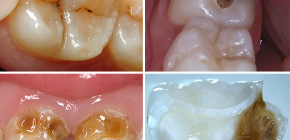
Almost everyone understands how tooth decay should look like. Frequent visitors to dental clinics probably have repeatedly had the opportunity to closely and thoroughly examine the caries on their teeth, not only in the mirror, but also on x-rays, and sometimes even on extracted teeth. And yet, in many cases, people, examining their teeth, do not pay attention to the signs of caries that are obvious to the doctor. And someone may be very surprised to learn what horror sometimes happens under a tiny, at first glance, hole in the enamel. What does caries look like in all the variety of its forms? Let's see the pictures.
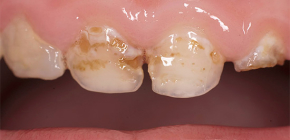
The treatment of decay of deciduous teeth has its own specific features and can be even more complicated than the treatment of permanent teeth. This is complicated by the attitude of the parents to the process: some do not know whether it is worth treating caries and tormenting a child in the dental chair if the teeth still fall out sooner or later, while others do not understand how to treat the teeth to a 2-3-year-old child, who is sometimes just problematic feed due to hyperactivity. And many people are afraid of anesthesia, which in some cases cannot be avoided. Should we be afraid of treating decay of deciduous teeth and what you need to know about it - let's figure it out together ...
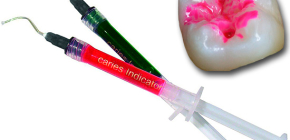
Caries-markers appeared relatively recently in the arsenal of domestic dentists, and thanks to the convenience and simplicity of working with them, they quickly became permanent assistants to doctors in the diagnosis and treatment of caries. Patients themselves are practically unfamiliar with these drugs, because they cannot be used at home, and doctors use them only as adjuvants that facilitate the treatment of caries and make treatment more effective.Why are caries markers so useful and how are they used? Let's get it right.
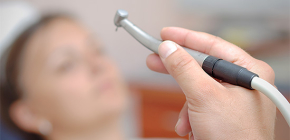
In most clinical cases, caries develops and becomes neglected because the patient is afraid to go to the dentist and feels pain before the upcoming treatment. When a problem arises, he finds a reason not to seek help, proving to himself that if the tooth hurts not very much and not often, then at the moment there is no urgent need to make an appointment with the doctor: he convinces himself that this is only a temporary phenomenon. The reason for this is the memory of how caries was treated in childhood, with the help of old drills and without anesthesia. Therefore, a visit to the dentist in most patients is associated precisely with pain in the treatment of seemingly minor carious injuries. What is the situation today? Is it painful to treat caries in good clinics with modern dental equipment? Let's see what “experienced” dentist patients say about this ...
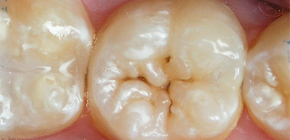
Most people think about caries prevention when all the deadlines for this have already passed. For effective protection against carious lesions, it is necessary to take care of the teeth constantly, regularly and every day. However, even if caries has already led a person to the dentist and caused several fillings to be installed, it is still not too late to take up protection from him. Still, there are still many healthy teeth in the mouth, and already treated ones need to be protected from relapse. Therefore, let's look at how even the initial signs of caries can be effectively and reliably prevented ...
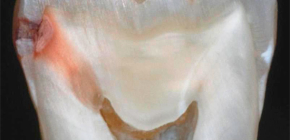
If caries cannot be cured at the initial stage of its development, then in most cases tooth decay will continue, as a result of which the tissues under the enamel will be affected. Often this is associated with the formation of deep cavities: in simple terms, patients in this case speak of “internal” caries, although doctors never call it that. We will talk about how caries can be dangerous when the carious cavity goes deep inside the tooth, and how to detect it before it leads to serious consequences.
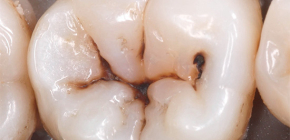
One of the most common dental diseases is fissure caries. In some cases, this disease can imperceptibly destroy a tooth, because it is not always easily diagnosed and does not cause severe pain in a patient to a certain stage. Let's see what the features of fissure caries are and how to protect your teeth from its hidden destructive effects ...
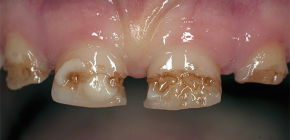
Neglected or multiple caries is very dangerous, since it affects at the same time a large number of teeth and can lead to the loss of the entire dentition. Moreover, it can develop both because of the patient’s irresponsible attitude to his teeth, and because of the high sensitivity of the teeth to cariogenic factors and serious metabolic disturbances in the body. Let's see what causes the development of the disease and what to do in such a situation.
